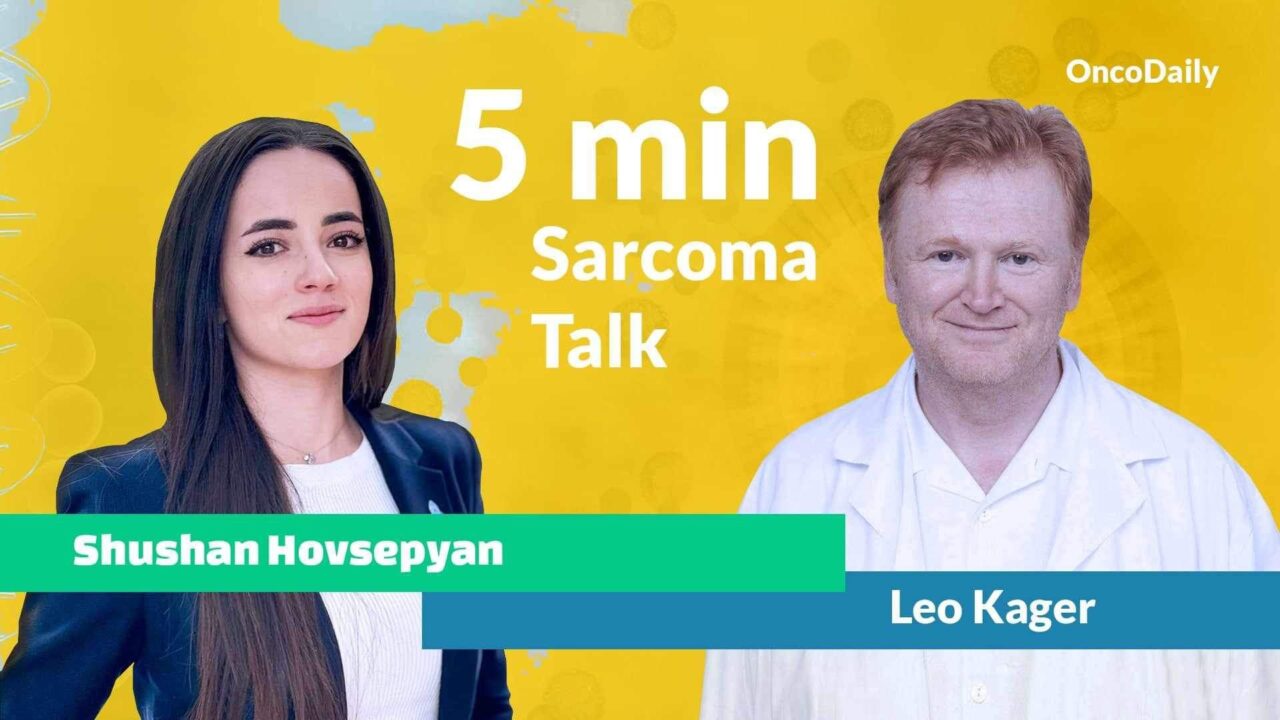Welcome to the world of sarcoma with the first episode of ‘5 Min Sarcoma Talk’ on Oncodaily. In this episode, host Dr. Hovsepyan and esteemed osteosarcoma expert Prof. Leo Kager discuss the latest advancements and challenges in sarcoma care and research. Discover the promising agents under investigation, Prof. Kager’s inspiring path to pediatric oncology, and more. Join us for an informative and inspiring journey into the sarcoma field.
About Leo Kager
Professor Leo Kager, MD holds board certificates in Pediatrics and Pediatric Hematology/Oncology. He is the head of the Outpatient Department of Hematology and Oncology at the St. Anna Children’s Hospital the head of the Children’s Cancer Research Institute in Vienna, a Professor of Pediatrics at the Medical University Vienna, and an active member of the Austrian Mountain Rescue Service. His research focuses on pediatric sarcomas, pediatric renal tumors, and rare hematological diseases. Moreover, he is an osteosarcoma expert. He has acted as a reviewer for the NEJM, Lancet Oncology, Annals of Oncology, Leukemia, etc., and published 100+ articles in Pubmed.
About Shushan Hovsepyan
Dr. Shushan Hovsepyan is a pediatric oncologist and adjunct assistant professor at the Yerevan State Medical University. She earned her medical degree (M.D.) from the same university’s General Medicine faculty, where she was awarded the Nominal Student Scholarship. Currently, she is a clinical research coordinator at the Yeolyan Hematology and Oncology Center. She completed a clinical fellowship lasting over a year at the pediatric oncology unit of the National Institute of Cancer in Milan, Italy, with a primary focus on pediatric sarcomas and rare tumors. Additionally, she was a clinical observer at the pediatric oncology unit of St. Anna Children’s Research Hospital in Austria for six months. Furthermore, she held a research fellowship position at the European Organisation for Research and Treatment of Cancer in Brussels, Belgium. Dr. Hovsepyan also completed the Postgraduate Harvard Medical School’s Effective Writing for Healthcare program, focusing on writing and reviewing medical-scientific manuscripts. Dr. Hovsepyan is a member of the POEM Training Committee and a graduate of the College of the European School of Oncology. She is a former co-chair of the SIOP Global Health Network Education and Training Working Group. Additionally, she is a member of several professional organizations, including SIOP, ASCO, ESO, and EpSSG.
About OncoDaily
OncoDaily.com was founded in 2023. It is a US-based oncology media platform, which features the latest news, insights, and patient stories from the world of oncology. Within a short period, it became one of the leading oncology media platforms globally. OncoDaily gathers content from various sources, including social media posts from renowned oncologists from all over the world, news from oncology societies and cancer centers, patient and survivor stories, and career-related information for professionals. The mission of OncoDaily is to empower patients, survivors, and professionals with the knowledge and inspiration they need to fight cancer. The motto of OncoDaily is “Cancer doesn’t take a day off – neither do we.”
Follow the transcript below


